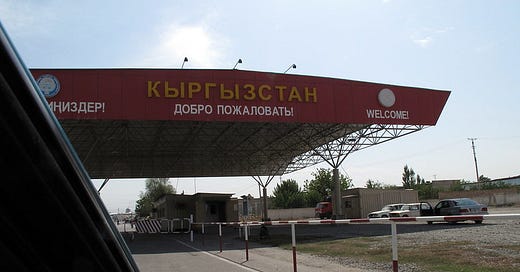The historic fixing of Central Asia’s unfixable borders problem
The hardening of the region's borders may paradoxically make them easier for traders and travellers to cross. That is good news all around.
It is foolhardy to use maps to navigate the more remote borderlands of Central Asia.
Lines on paper do not quite match reality. Even navigation apps are misleading.\
Travellers in parts of southern Kyrgyzstan may while consulting Google Maps find themselves digitally laid down in northern Tajikistan. In most places there are barbed-wire fences, concrete w…
Keep reading with a 7-day free trial
Subscribe to Havli - A Central Asia Substack to keep reading this post and get 7 days of free access to the full post archives.





